Abstract
1. A previous study showed that when combined with exercise in normal subjects, hypercapnic and hypoxic ventilatory stimuli did not have a specific effect on the intensity of the sensation of breathlessness in addition to their stimulation of ventilation. The aim of the present study was to assess the significance of another reflex ventilatory stimulus, metabolic acidosis, in the genesis of this sensation. 2. Six subjects performed progressive exercise tests (mean workload, 103 W; range, 88-125 W) with normal acid-base status. Following NH4Cl-induced metabolic acidosis (mean change in base excess, -3.6 mmol l-1; range, -0.3 to -6.8 mmol l-1) exercise was repeated (mean workload, 91 W; range, 53-116 W) such that the combined ventilatory stimulation resulted in levels of ventilation (mean maximum, 65 l min-1) 'matched' to those resulting from exercise alone. A third, 'matched ventilation', exercise test was performed during metabolic acidosis but with end-tidal PCO2 controlled to a normal level (mean workload, 56 W; range, 17-103 W). Breathlessness was assessed using a visual analogue scale (VAS). 3. Progressive hypercapnic ventilatory stimulation was given before (mean maximum end-tidal PCO2 (PET,CO2), 61 mmHg) and during metabolic acidosis (mean maximum PET,CO2, 57 mmHg) to achieve the same peak level of ventilation (mean maximum, 59 l min-1). Breathlessness was assessed with the VAS. 4. As ventilation increased during a test, there were no statistically significant differences in the increasing breathlessness scores with metabolic acidosis compared to control, for either exercise (mean VAS, 22 mm vs. 24 mm) or progressive hypercapnia (mean peak VAS, 31 mm vs. 32 mm). 5. These results do not support the idea that metabolic acidosis is associated with a change in the relationship between the intensity of breathlessness and ventilation; this is similar to results found with other reflex ventilatory stimuli. 6. These findings are consistent with the hypothesis that the degree of reflex ventilatory activation is an important determinant of the intensity of the sensation of breathlessness in healthy humans, irrespective of the exact nature of ventilatory stimulus.
Full text
PDF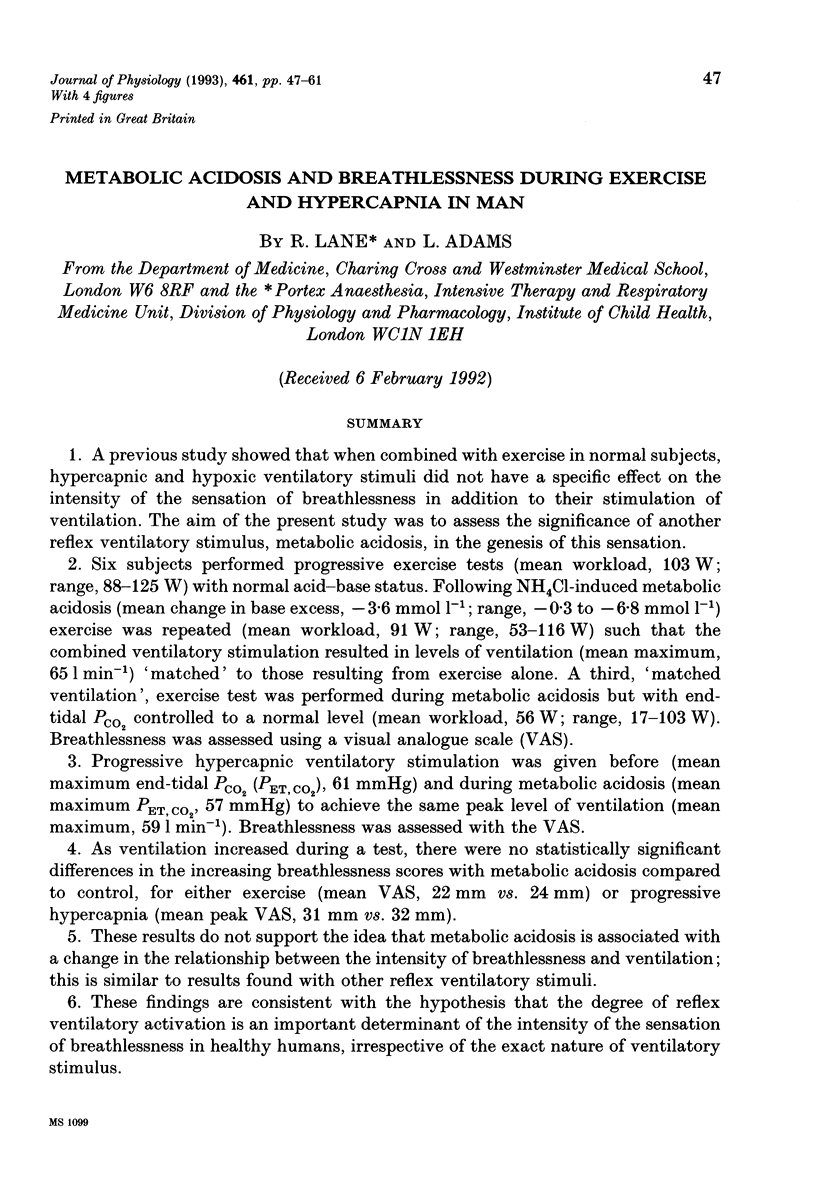
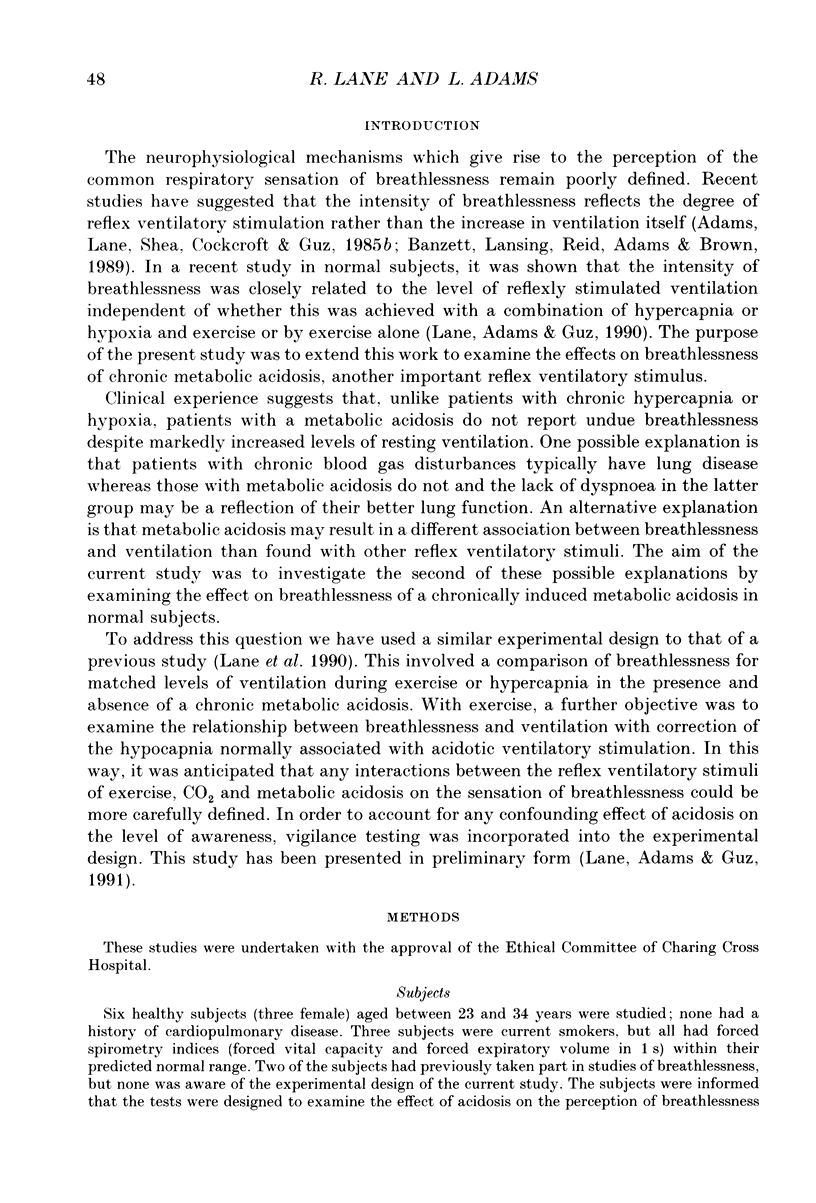
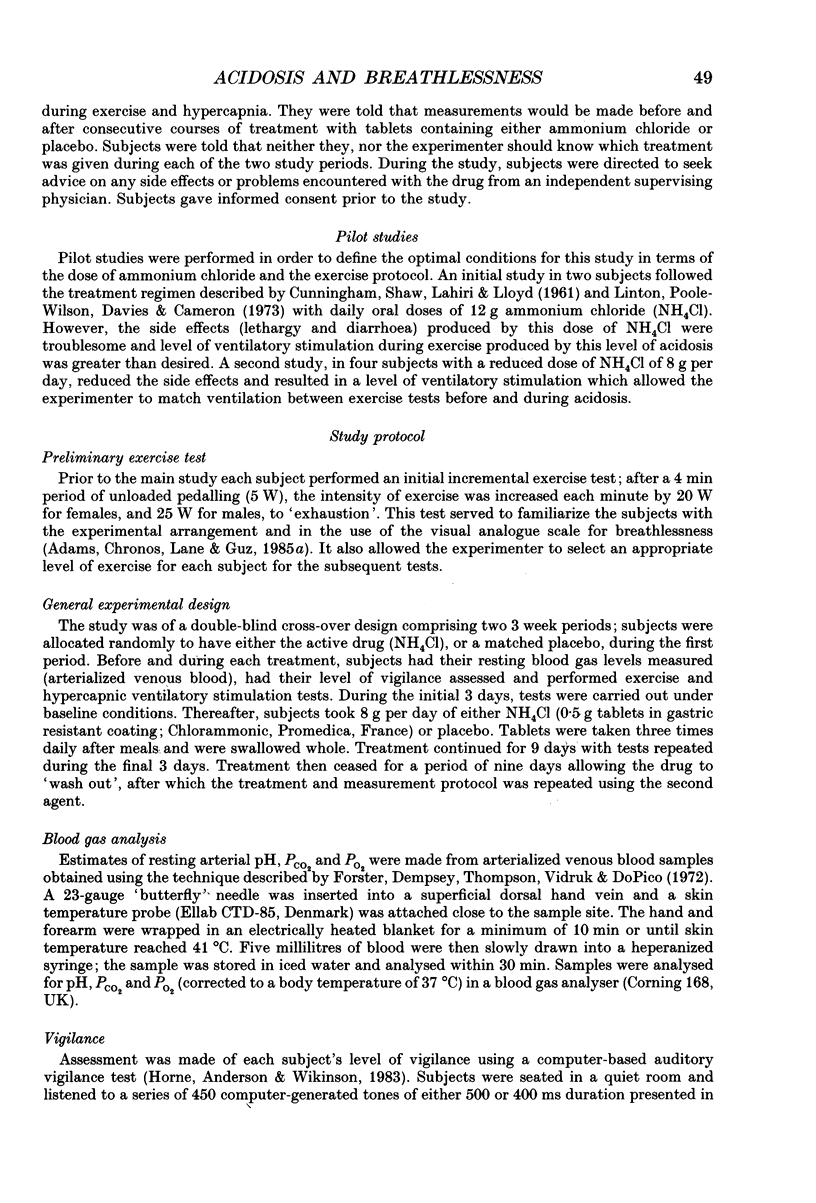
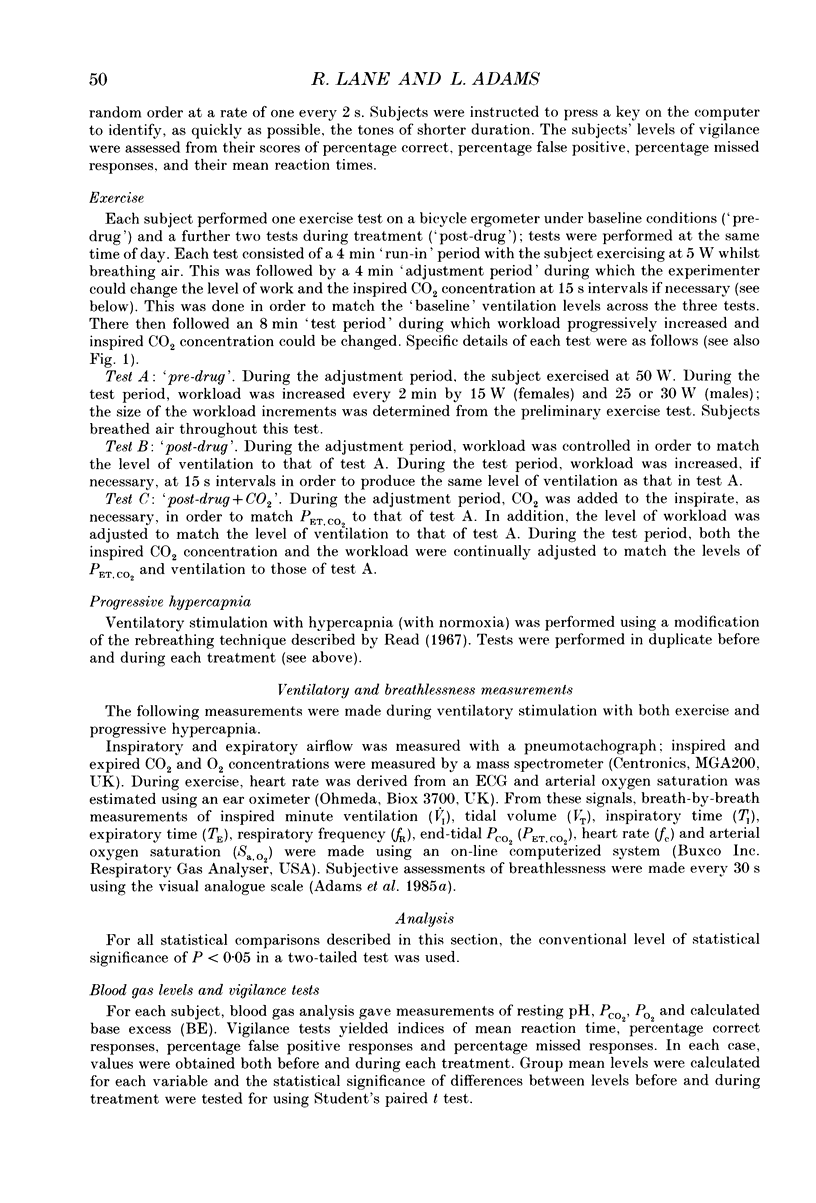
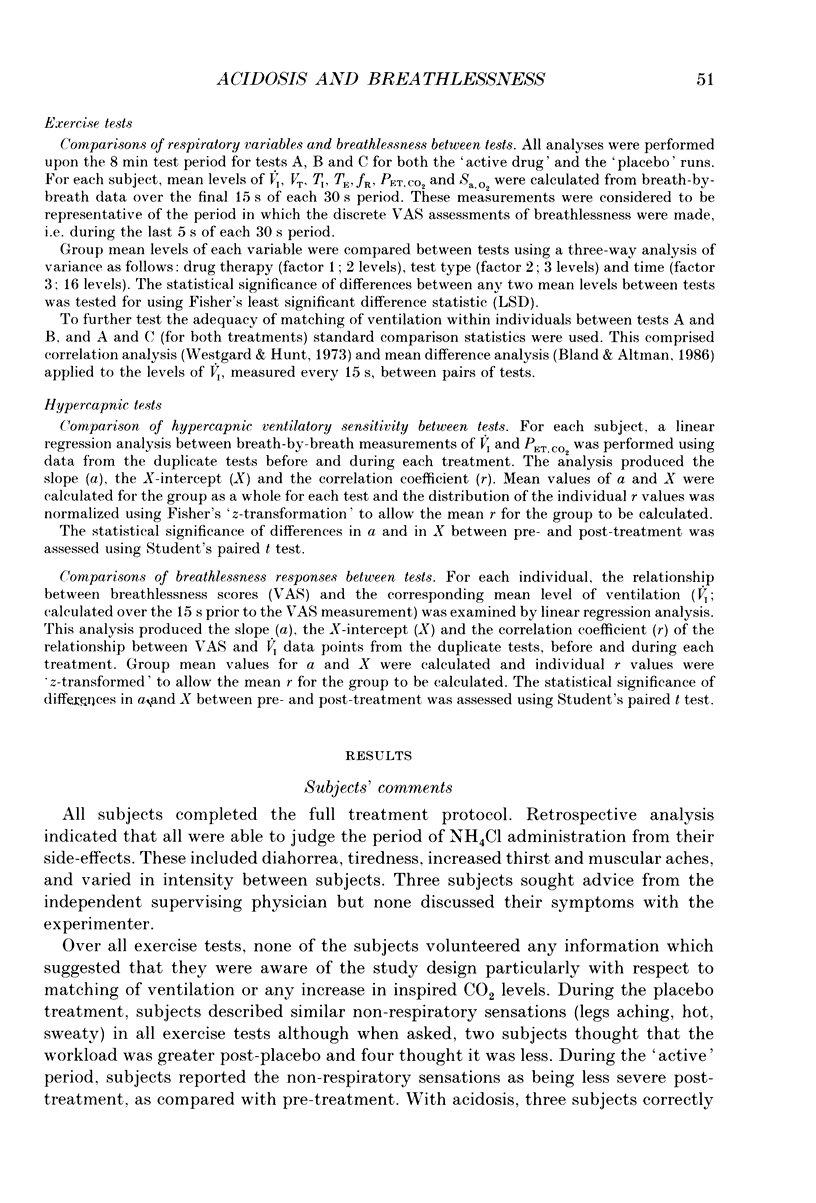
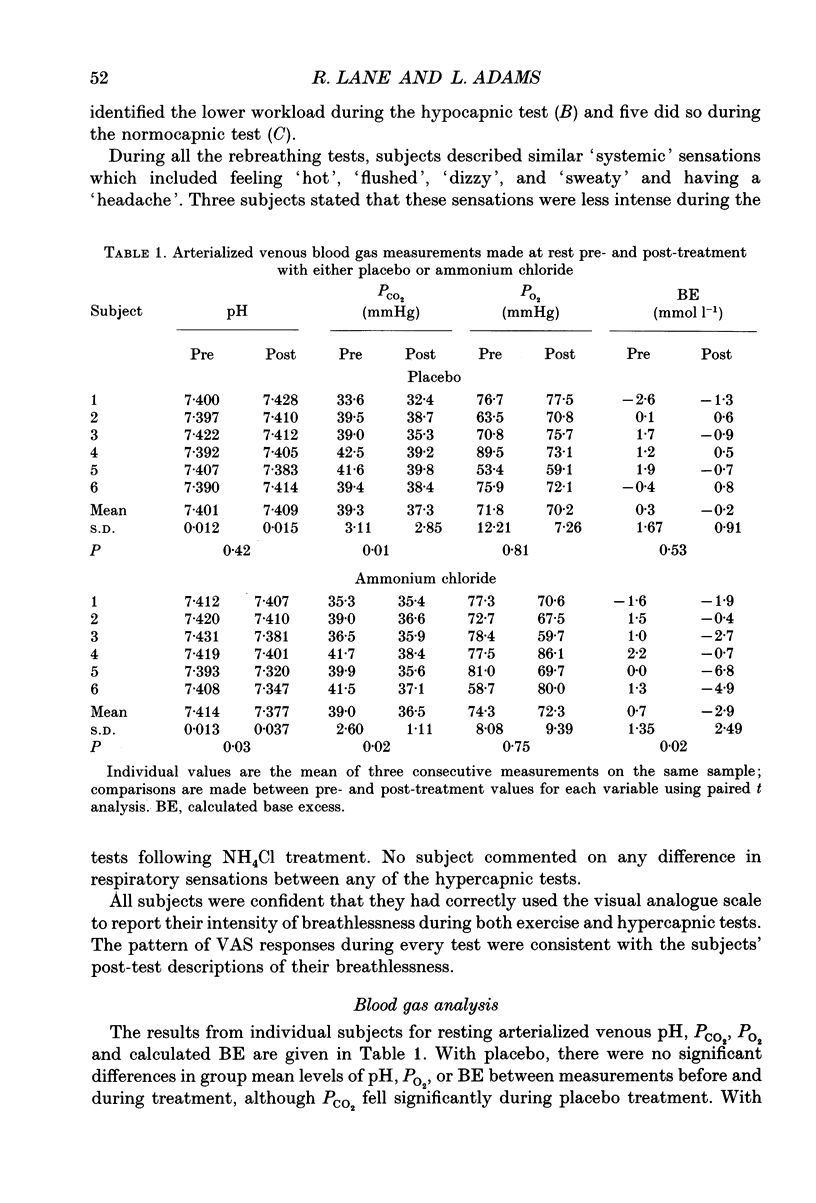
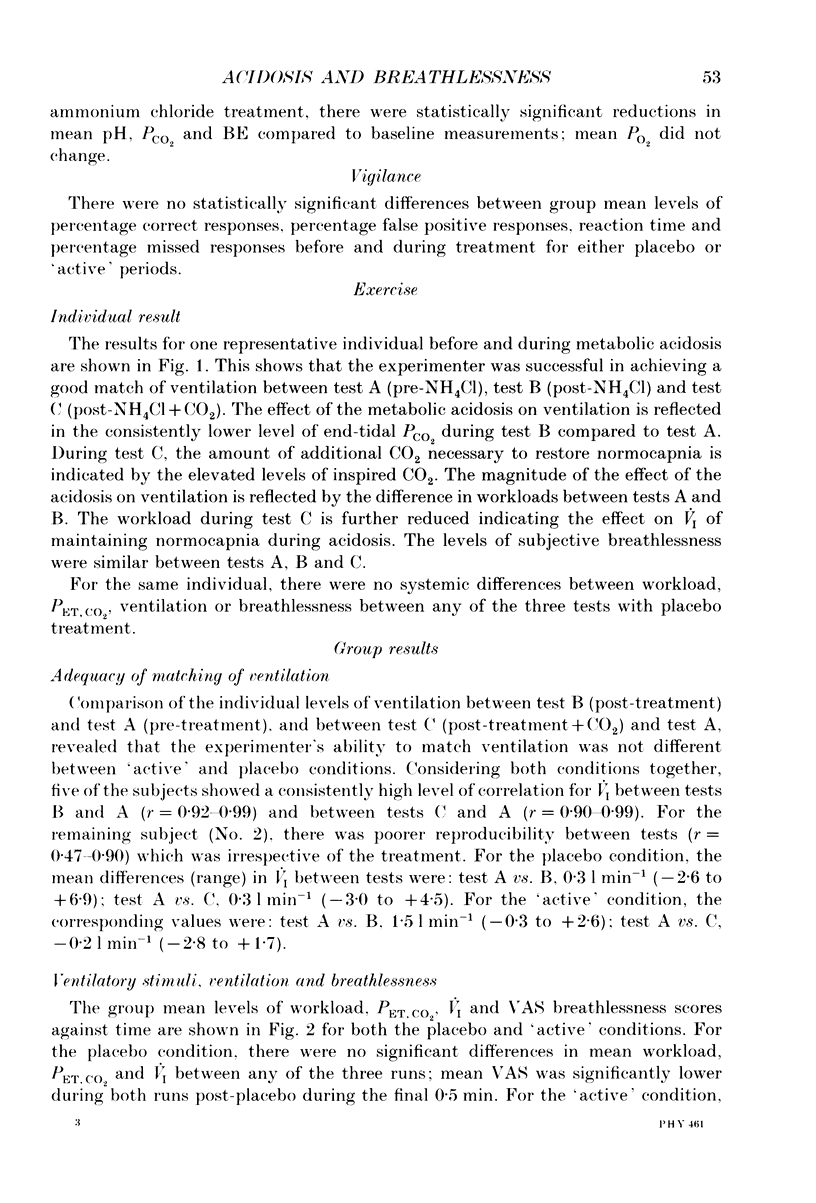

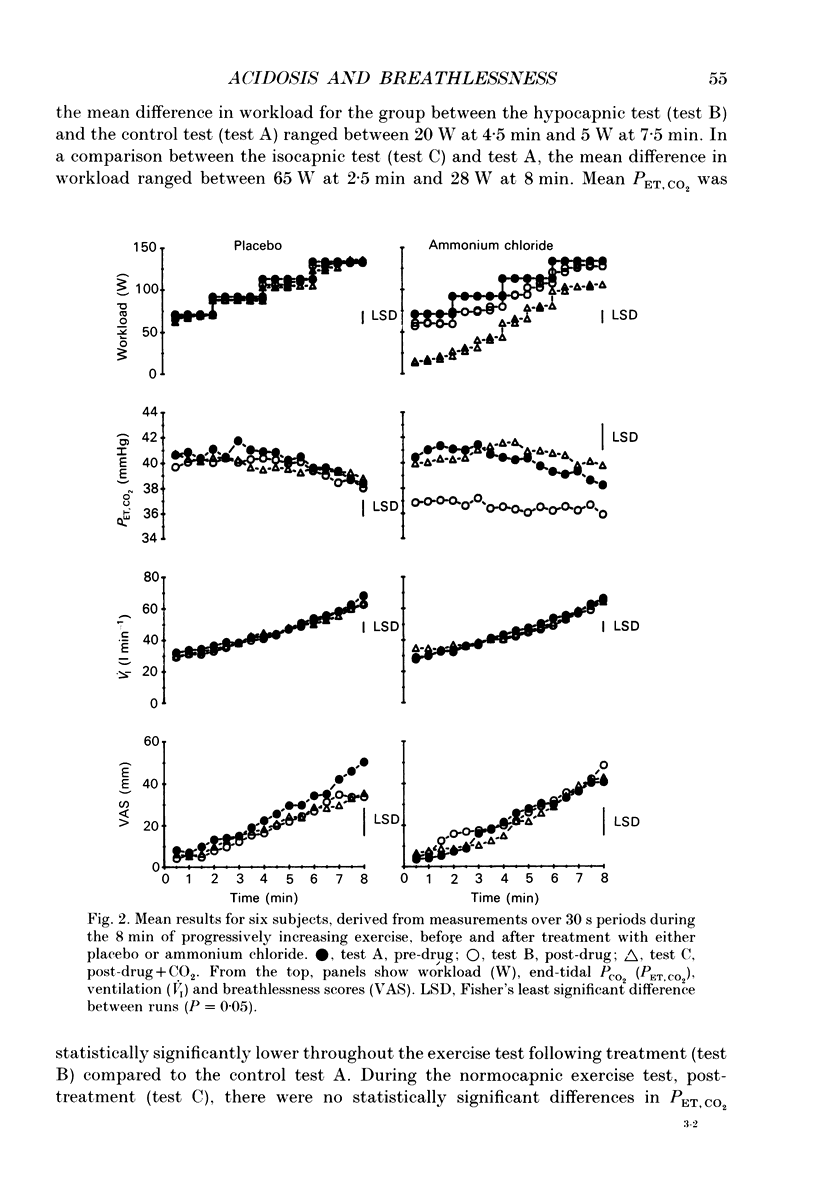
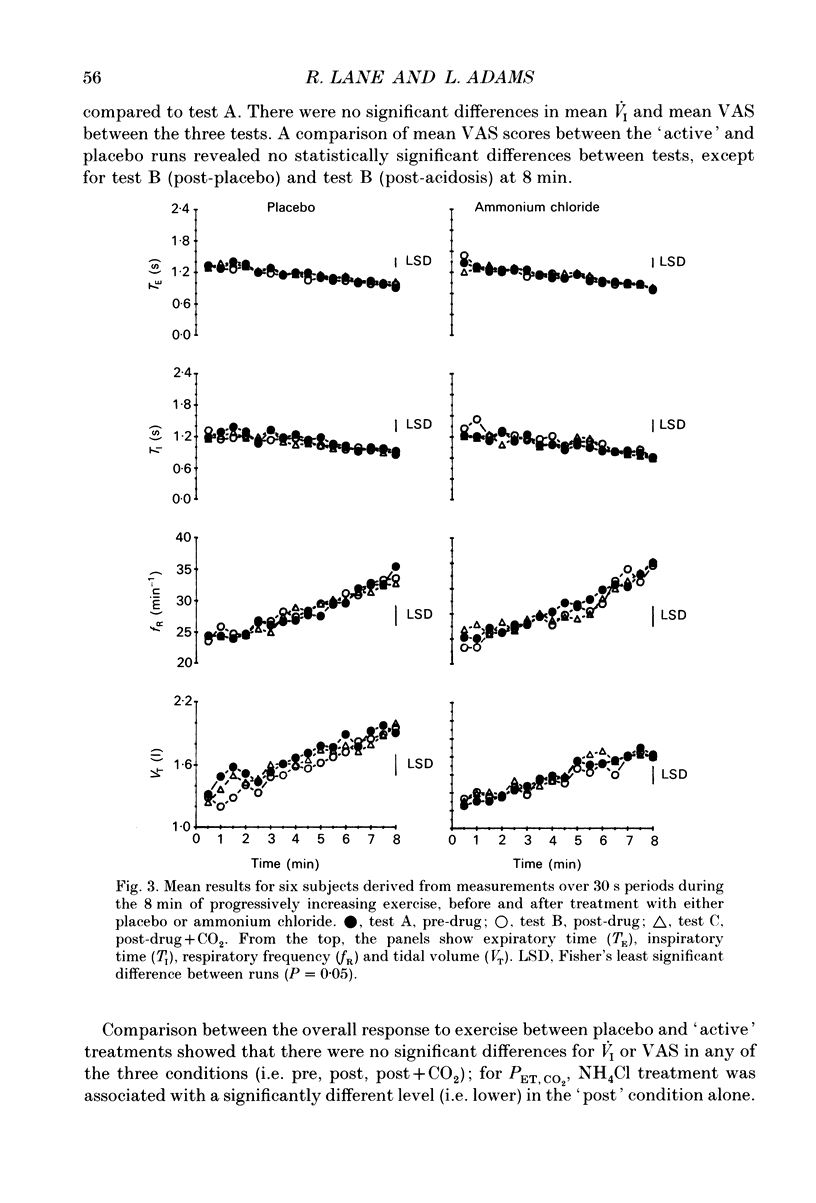
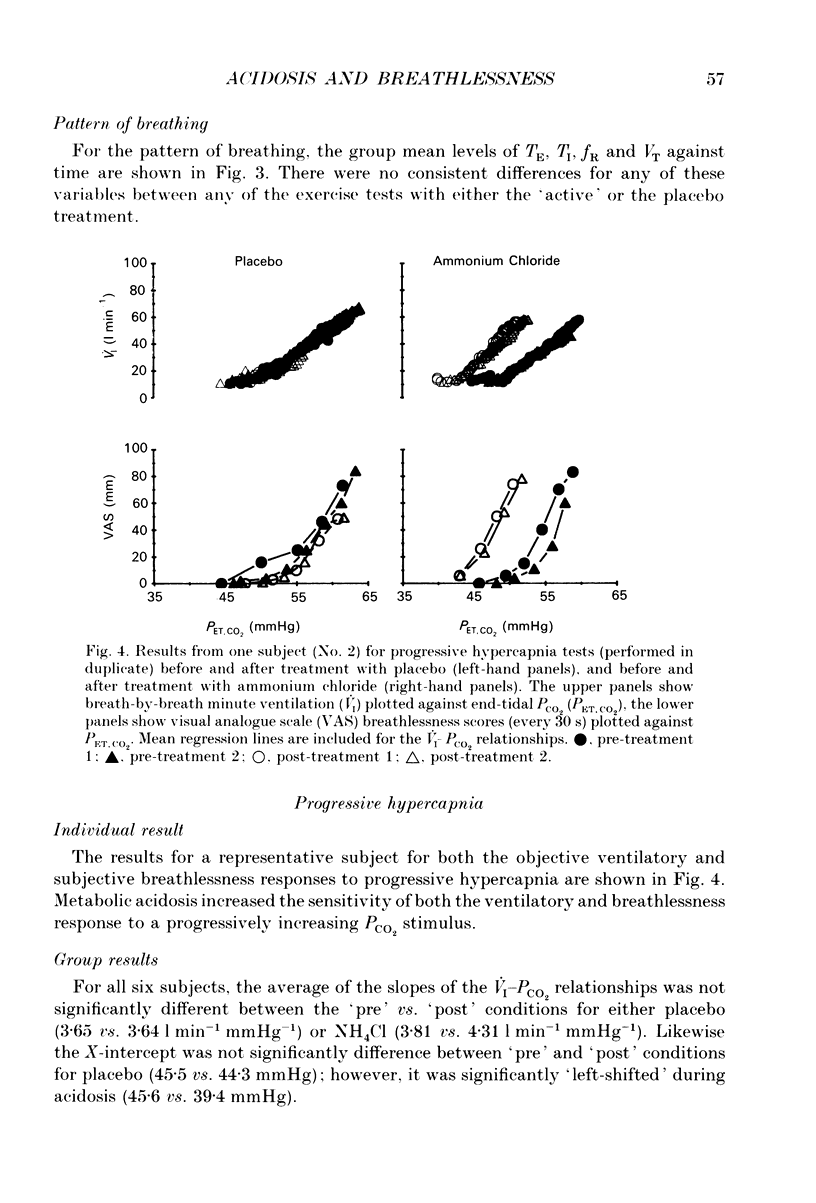

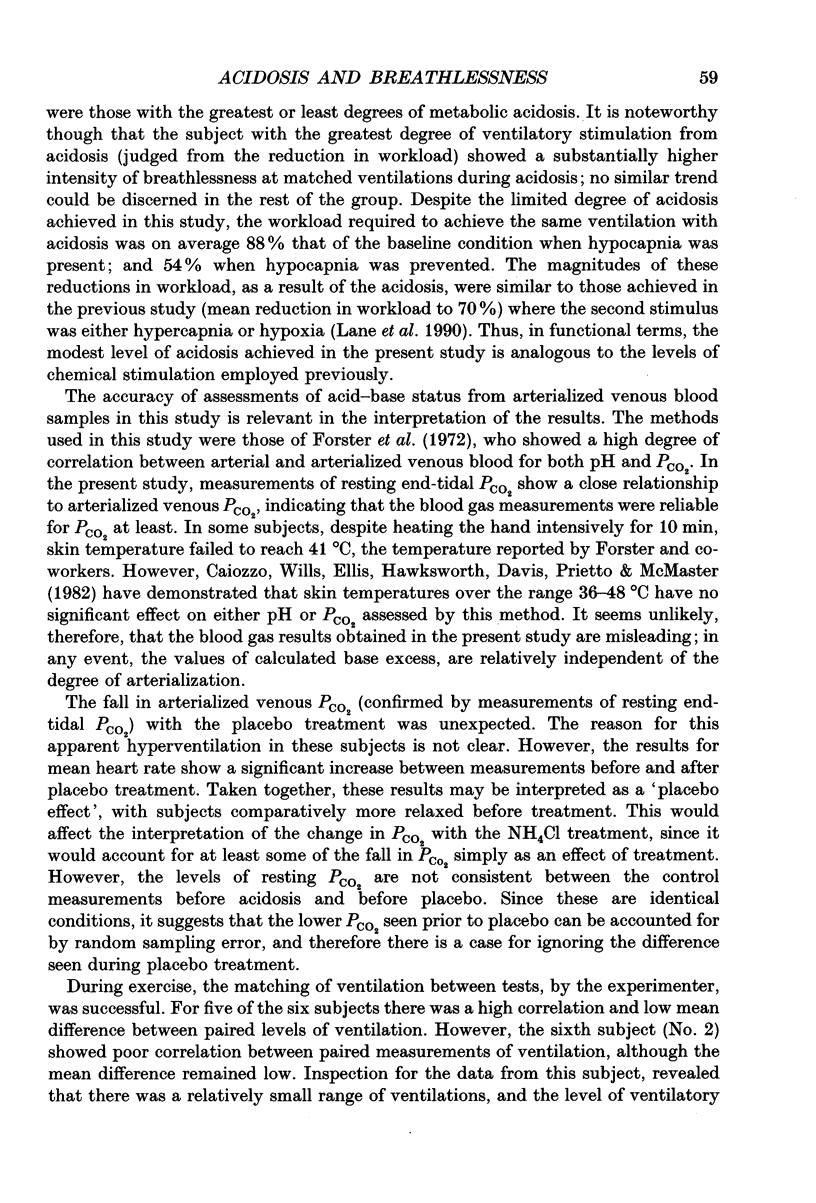
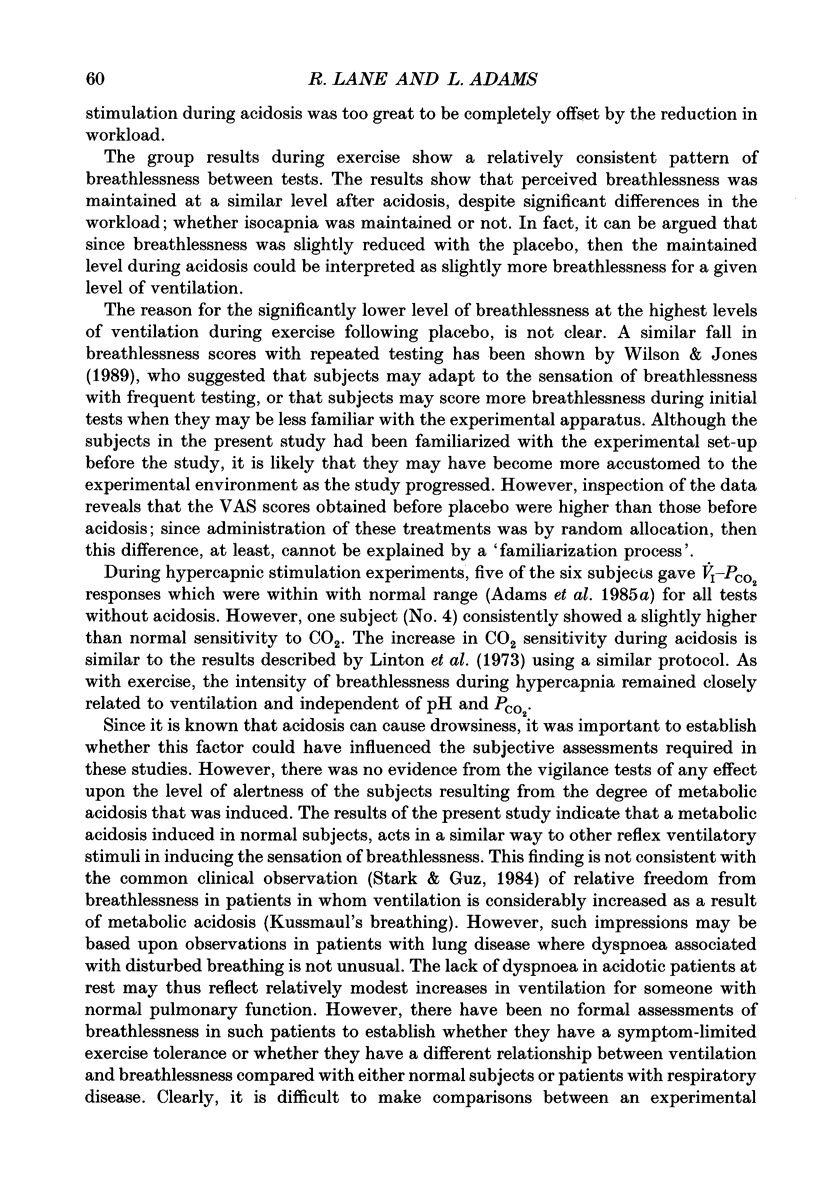
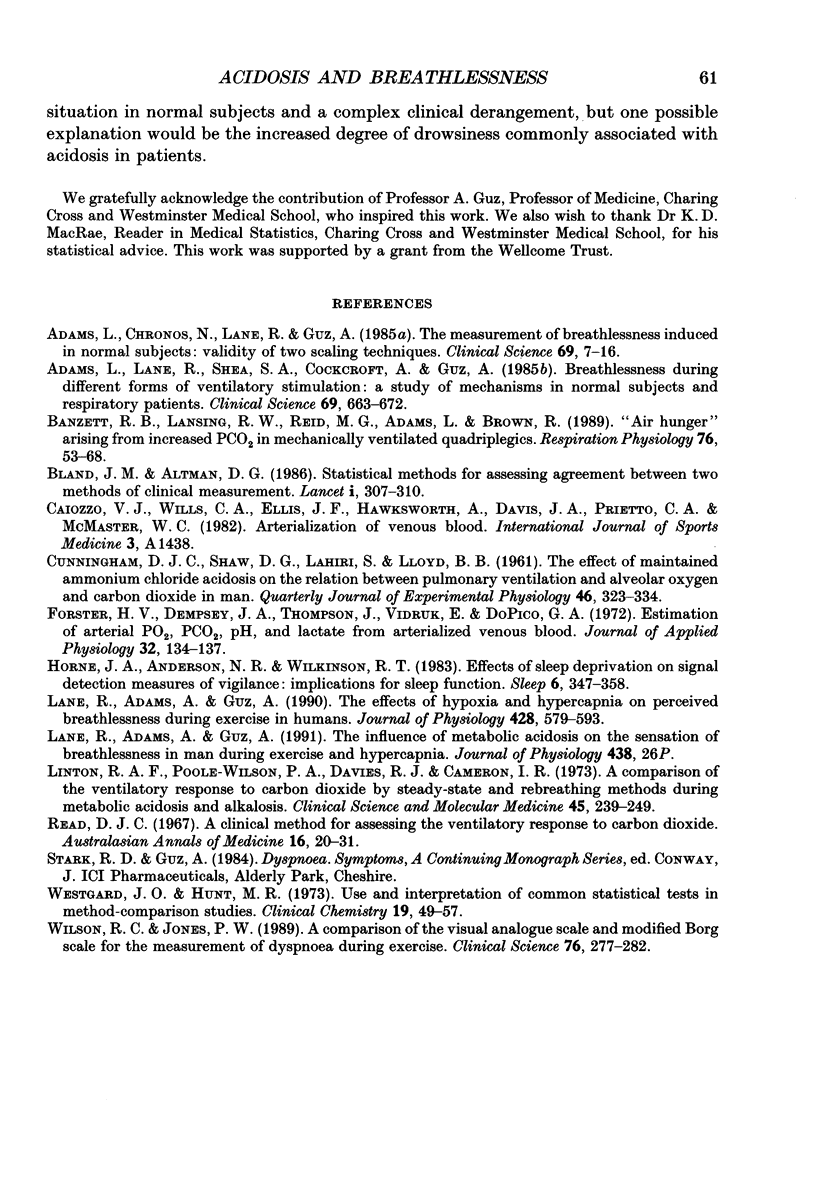
Selected References
These references are in PubMed. This may not be the complete list of references from this article.
- Adams L., Chronos N., Lane R., Guz A. The measurement of breathlessness induced in normal subjects: validity of two scaling techniques. Clin Sci (Lond) 1985 Jul;69(1):7–16. doi: 10.1042/cs0690007. [DOI] [PubMed] [Google Scholar]
- Adams L., Lane R., Shea S. A., Cockcroft A., Guz A. Breathlessness during different forms of ventilatory stimulation: a study of mechanisms in normal subjects and respiratory patients. Clin Sci (Lond) 1985 Dec;69(6):663–672. doi: 10.1042/cs0690663. [DOI] [PubMed] [Google Scholar]
- Banzett R. B., Lansing R. W., Reid M. B., Adams L., Brown R. 'Air hunger' arising from increased PCO2 in mechanically ventilated quadriplegics. Respir Physiol. 1989 Apr;76(1):53–67. doi: 10.1016/0034-5687(89)90017-0. [DOI] [PubMed] [Google Scholar]
- Bland J. M., Altman D. G. Statistical methods for assessing agreement between two methods of clinical measurement. Lancet. 1986 Feb 8;1(8476):307–310. [PubMed] [Google Scholar]
- CUNNINGHAM D. J., SHAW D. G., LAHIRI S., LLOYD B. B. The effect of maintained ammonium chloride acidosis on the relation between pulmonary ventilation and alveolar oxygen and carbon dioxide in man. Q J Exp Physiol Cogn Med Sci. 1961 Oct;46:323–334. doi: 10.1113/expphysiol.1961.sp001550. [DOI] [PubMed] [Google Scholar]
- Forster H. V., Dempsey J. A., Thomson J., Vidruk E., DoPico G. A. Estimation of arterial PO2, PCO2, pH, and lactate from arterialized venous blood. J Appl Physiol. 1972 Jan;32(1):134–137. doi: 10.1152/jappl.1972.32.1.134. [DOI] [PubMed] [Google Scholar]
- Horne J. A., Anderson N. R., Wilkinson R. T. Effects of sleep deprivation on signal detection measures of vigilance: implications for sleep function. Sleep. 1983;6(4):347–358. doi: 10.1093/sleep/6.4.347. [DOI] [PubMed] [Google Scholar]
- Lane R., Adams L., Guz A. The effects of hypoxia and hypercapnia on perceived breathlessness during exercise in humans. J Physiol. 1990 Sep;428:579–593. doi: 10.1113/jphysiol.1990.sp018229. [DOI] [PMC free article] [PubMed] [Google Scholar]
- Linton R. A., Poole-Wilson P. A., Davies R. J., Cameron I. R. A comparison of the ventilatory response to carbon dioxide by steady-state and rebreathing methods during metabolic acidosis and alkalosis. Clin Sci Mol Med. 1973 Aug;45(2):239–249. doi: 10.1042/cs0450239. [DOI] [PubMed] [Google Scholar]
- Read D. J. A clinical method for assessing the ventilatory response to carbon dioxide. Australas Ann Med. 1967 Feb;16(1):20–32. doi: 10.1111/imj.1967.16.1.20. [DOI] [PubMed] [Google Scholar]
- Westgard J. O., Hunt M. R. Use and interpretation of common statistical tests in method-comparison studies. Clin Chem. 1973 Jan;19(1):49–57. [PubMed] [Google Scholar]
- Wilson R. C., Jones P. W. A comparison of the visual analogue scale and modified Borg scale for the measurement of dyspnoea during exercise. Clin Sci (Lond) 1989 Mar;76(3):277–282. doi: 10.1042/cs0760277. [DOI] [PubMed] [Google Scholar]


